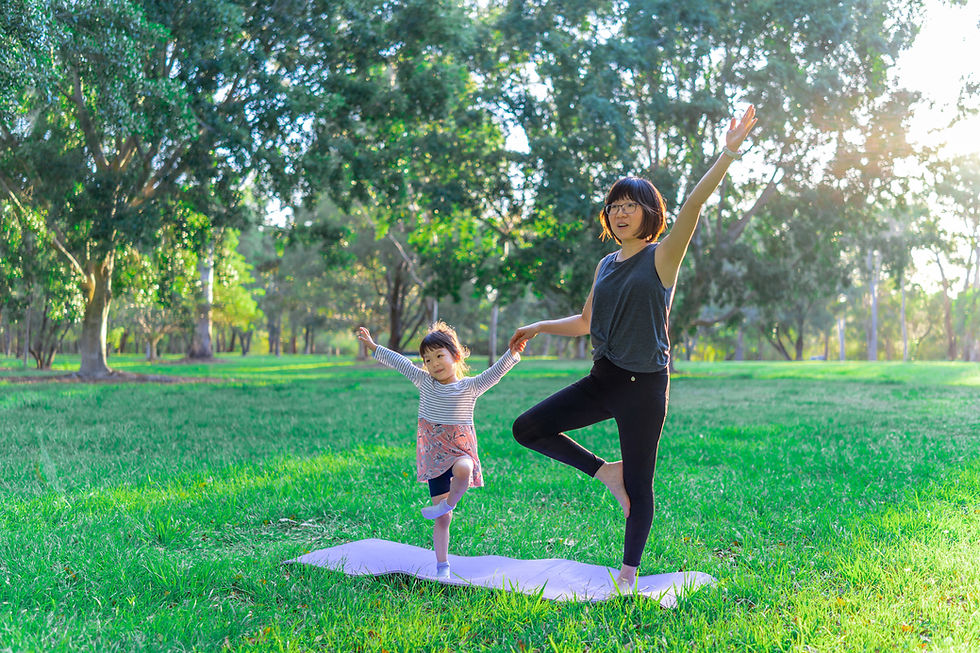As early as age 25, our ability to balance starts to decline. It may seem alarmingly early and impossible, but it is true. For this reason, it is so important to work on balance everyday. One tip that I like to give my patients is simply to just balance on one foot while you brush your teeth and switch half way through.

We are naturally inverted pendulums - constantly in a state of falling
When I was in physical therapy school, I had a professor that used a phrase to describe why balance is so important to work on throughout life. He would say, “We are naturally inverted pendulums - constantly in a state of falling.” If you think about it, it’s why we can’t fall asleep standing up! There are three major systems that contribute to how we stay upright. To put it simply, they are our eyes (visual system), ears (inner ear, aka vestibular system), and joints (proprioception). That’s why when we challenge your balance in physical therapy, we often will ask you to close your eyes as this will help train more receptors in your ears and joints. Similarly, we may ask you to stand on something unsteady which will increase the demand and input you get from your eyes and ears since we’ve compromised your joint receptors. If we are being REALLY advanced, we will ask you to balance on one foot on something unstable while shaking your head left and right to throw off ALL THREE SYSTEMS!

Overload Principle
But balance isn’t always directed at how well you can stand on one foot. Very often in our line of work we come across the population who has a fear or risk of falling in the community. These fears or concerns are completely rational - as I mentioned in the beginning of this post, our balance starts to decline at age 25! In physical therapy, we work on strategies or exercises to help reduce the risk of falling and injury. Some of these strategies include using an assistive device like a cane or walker, but usually this is a last resort. Typically, we try to retrain the three balance systems. There are a million different ways to challenge balance in the physical therapy clinic that can be practiced at home. It is our job in physical therapy to always give you homework that is challenging but not impossible. We call this the “overload principle.” We sometimes want it to be a LITTLE bit of a struggle so that there’s room for improvement! For example, if you truly cannot balance on one foot, we can ask you to stand on two feet in a tandem position (one foot in front of the other). This gives you more input (two feet on the ground instead of one), but still a smaller base of support as opposed to just standing with your feet together. And then let’s say that tandem standing was too difficult but standing with your feet together was too easy, we could have you stand with your feet together and close your eyes or turn your head left and right - bringing back the three systems of balance.

Reactive Balance

Lastly, one of the most important components of balance is what we call REACTIVE balance. Basically, in physical therapy we will put you in a situation in which we know the inverted pendulum WILL tip over. We want to see how you STEP and REACT. We want to train you to make sure you aren’t crossing over your own feet or taking too small of a step to really catch yourself. I have found in my seven years of practice that once we get to this part of physical therapy, my patients feel incredibly confident that they will not fall while they are out and about. At first it is tough to ask my patients to practice their single leg balance in the middle of a room with nothing around them, but quickly they realize it is because if they catch a toe on a curb or hit a slippery patch on a trail they won’t always have a convenient wall or countertop to grab. This helps them learn to take that appropriate reactive step to ultimately avoid injury.
Physical Therapy will almost always challenge the balance systems
Whilst this post seemingly focused on reducing the risk of falls in the community, there are significant benefits in athletics and sports to emphasizing balance. Have you ever considered how complex the movement of running on a trail can be? Your visual input is coming through your eyes faster than normal walking, your head is moving up and down at a faster frequency, you have uneven terrain under your feet, AND you're balancing on one foot for a short amount of time! The human body can be incredibly efficient with such tasks, but when an injury occurs the body starts to compensate. That is why physical therapy will almost ALWAYS challenge the balance systems to ensure appropriate motor control and neuromuscular re-education to restore the body back to being as efficient as possible. Plus, it’s super fun to do in the clinic.

Comments